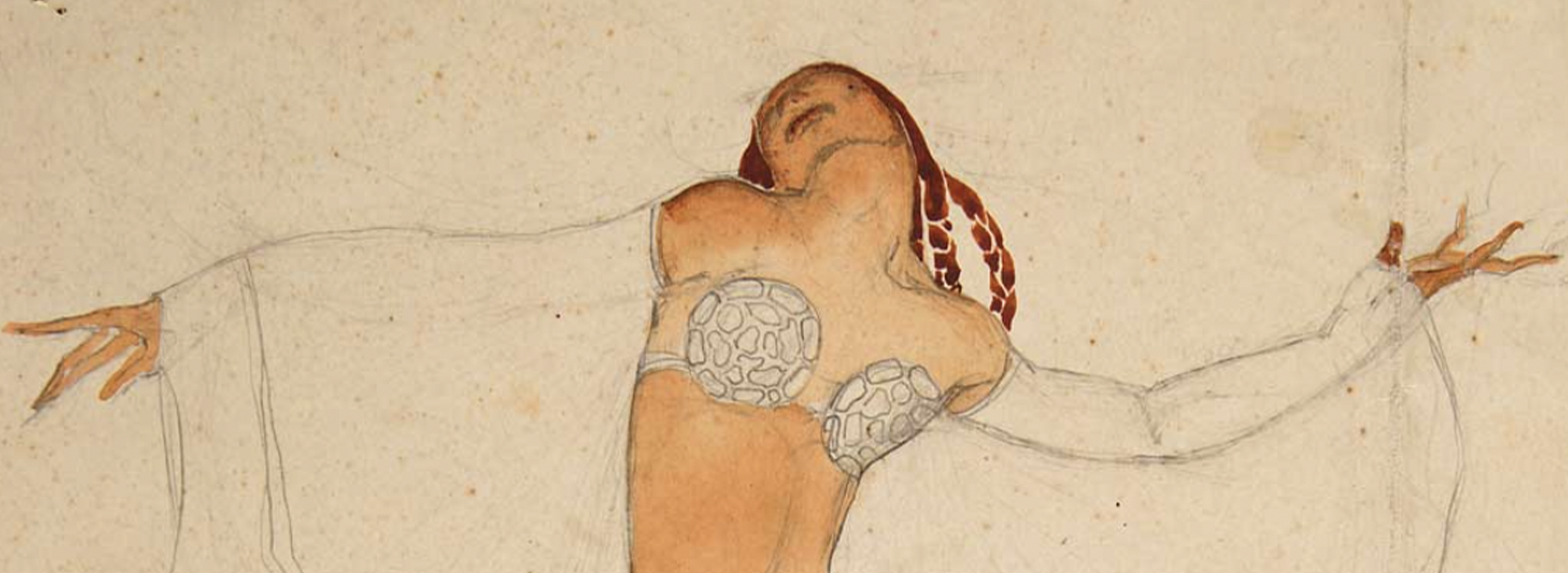
Feel free to add tags, names, dates or anything you are looking for


Petre Otskheli, one of the most important representatives of Georgian Modernism, was born in 1907 into a wealthy Kutaisi family. At that time, Kutaisi was a city where the theater and several gymnasiums functioned alongside the cinema. In 1913 the Otskheli family moved to Moscow, where Petre's father began to run a broadcloth factory. The Otskheli family took great interest in the care of all four children. They were brought up under the supervision of a French tutor, and were enrolled at a French school. The children often attended theater performances – a fact which significantly influenced the formation of Petre’s inner universe.
This happened at the beginning of the 20th century – an era of great political, social, intellectual, and aesthetic changes, when in parallel with social and technological innovations, various art movements were born. The foundation was laid for a new form of artistic thinking - Modernism. In the history of art (namely, in the realm of painting) this period is known as one of the most fruitful, marked with new discoveries that reflected the ongoing social processes. The accelerated rhythm of life and obsolescence of existing ideals led to a reassessment of the established norms and conventional forms imposed by classical art. This was a direct rejection of academic, representational art, where the principle of presenting reality was replaced by self-expression. It is no coincidence that the theater became a kind of laboratory of the avant-garde. Along with Nemirovich-Danchenko and Stanislavski, the theater welcomed innovators like Meyerhold and Marjanishvili. Naturalism and earthliness were replaced by symbolism and conditionality, paving the way for artists who became engaged in conducting bold spatial, constructivist, and colorful experiments. In the 1910s and 1920s, Moscow’s theater performances were decorated by distinguished artists of the modernist era. It is a known fact that after having watched a performance, Petre made sketches in his notebooks.
After the October Revolution of 1917, the Otskheli family property was confiscated, and as a result the family was forced to return to Georgia in 1920. In 1925, Petre enrolled at the Tbilisi State Academy of Arts (he left after a year), where he studied under the guidance of Joseph Charlemagne and Eugene Lanceray. In 1927, the 20-year-old Petre Otskheli produced designs for the play “Fire Starters” at the Workers’ Theatre, and with his unusual, very bold, and completely original scenography captured the interest of Kote Marjanishvili, the then already renowned Georgian theater director and reformer.

Petre Otskheli (1907-1937) - Uriel Acosta
In 1929, Kote Marjanishvili entrusted the young artist with the decoration of his perhaps most important performance, “Uriel Acosta.” After the resounding victory of the play, Otskheli's life became closely involved with Marjanishvili and the theater – the universe that turned into an integral part of his existence.
Otskheli’s deep understanding of dramaturgy demonstrated his creative range. The artist expressed the inner universe of a protagonist so accurately that the visuals he produced actually prompted the director’s style of performance.
The costume sketches he created are as diverse as the dramaturgy itself. The contour is at times stern, straight, and sharp (The Robbers, 1932), and at others so stylish that it clearly shows the protagonist’s character through exaggerated gestures (Beatrice Chenchi, 1930). Otskheli manages to manifest the spaciousness and texture of a fabric thanks to the use of just two or three modest colors. The vertical folds emphasize the rigidity of the costume (Uriel Acosta, 1929). In other cases, to the contrary - the amazing flow of a line is dynamic and plastic, merging the colorful texture of a costume and its contour with the body (The Whites, 1930), thus affording the figure maximum expression and artistry.
.jpg)
Petre Otskheli (1907-1937) - Beatrice Chenchi

Petre Otskheli (1907-1937) - The Whites
Otskheli’s stage design sketches are generalized. For example, for the play “Joy Street” (1932), he opted for an avant-garde style - Constructivism. Rejecting volume and perspective, diagonal fragments of the script or other geometric elements are used interchangeably on the surface of a conditional façade to create vertical and horizontal modes. Otskheli's only work for the cinema is also marked by its expressive character and boundless imagination. These are sketches of interiors and costumes for the movie “Flying Painter” (1936). The full-length superhero, who is dressed in a fantastic costume and presents a confident, benevolent aviator, has become one of the most memorable creations and a business card of the artist.
.jpg)
Petre Otskheli (1907-1937) - Flying Painter
Clearly his work is not only limited to scenography: it constitutes independent, high-ranking works of fine art. Petre Otskheli was a versatile artist on a constant quest for different directions. Some of his works are abstract, some constructivist, expressionist or symbolic, and thus all the characteristics of Modernism are united in one. He established his own aesthetic with its depth, dramatism and light irony in line with his life and its tragic finale.
In 1939, when the works of Petre Otskheli were awarded a Gold Medal at the International Exhibition of Stage Design in London, the artist had already been dead for two years. He fell victim to the Stalinist repressions of 1937, being punished for free thinking in a totalitarian country where people of his kind were simply executed.